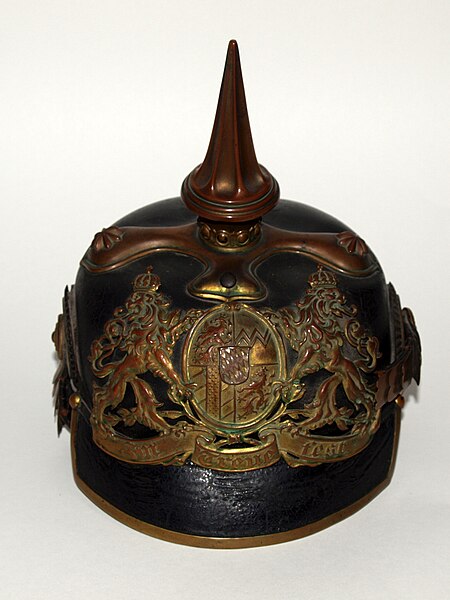Boiled leather, often referred to by its French translation, cuir bouilli, was a historical material common in the Middle Ages and Early Modern Period and used for various purposes. It was leather that had been treated so that it became tough and rigid, as well as able to hold moulded decoration. It was the usual material for the robust carrying-cases that were made for important pieces of metalwork, instruments such as astrolabes, personal sets of cutlery, books, pens and the like. It was used for some armour, being both much cheaper and much lighter than plate armour, but could not withstand a direct blow from a blade, nor a gunshot.
Case for a book, with fittings for a carrying-cord, 15th century. The coat of arms (on the other side) suggests it was made for a bishop.
German pickelhaube, c. 1860
Crupper plate for horse armour, 16th century, north Europe
Design for cuir bouilli armour for tournaments, from Le Livre des tournois, 1460s
The Pickelhaube, also Pickelhelm, is a spiked leather or metal helmet that was worn in the 19th and 20th centuries by Prussian and German soldiers of all ranks, firefighters and police. Although it is typically associated with the Prussian Army, which adopted it in 1842–43, the helmet was widely imitated by other armies during that period. It is still worn today as part of ceremonial wear in the militaries of certain countries, such as Sweden, Chile, and Colombia.
Bavarian Officer Pickelhaube c. 1900
Prussian police leather Pickelhaube
Staff captain, Russian artillery, wearing a Pickelhaube, c. 1858
Russian Pickelhauben of the 1849 version, with detachable plumes, 1853








